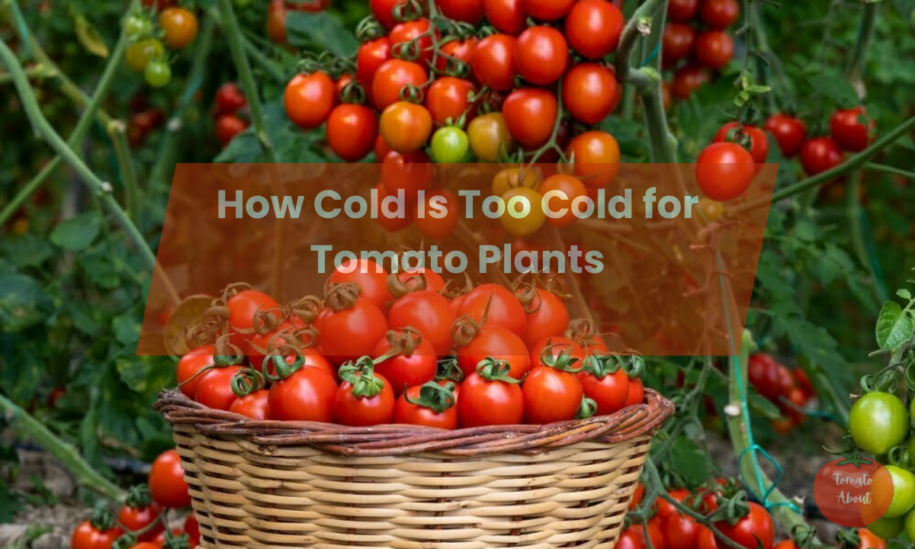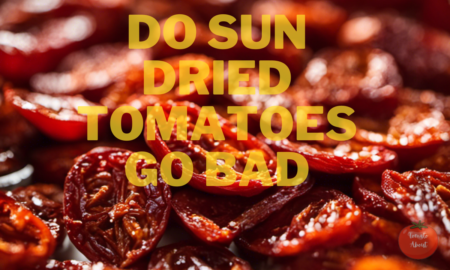Tomatoes are synonymous with summer for good reason. The warm-weather fruits simply thrive in hot, sunny conditions. But exactly how cold is too cold for tomato plants?
Understanding tomato cold tolerance helps you maximize harvests season after season. In this article, we’ll explore how temperature impacts tomatoes at all stages of growth.
So, How Cold Is Too Cold for Tomato Plants?
Tomatoes require warm temperatures above 50°F to germinate, grow, and produce fruit properly. The temperatures below 50°F stunt growth and prevent fruiting. A temperature below 32° F will cause frost that will kill the tomato plants and fruits.
Tomato Cold Tolerance Basics
Native to South America, tomatoes perform best on warm days and nights. Temperatures below 50°F begin to stress plants, slowing growth and reducing yield potential.
Tomatoes are chill-sensitive in the following temperature ranges:
- Germinating seeds: 65-85°F
- Young seedlings: 60-85°F
- Transplants & mature plants: 50-85°F
Once growing, tomatoes can tolerate some cool weather. However exposure to sustained cold causes cellular damage that cannot be reversed.
Now let’s take a closer look at how chilly temperatures impact key phases of the tomato life cycle.
Germinating Seeds
Tomato seeds require adequately warm soil to sprout successfully. The ideal temperature range is 65-85°F.
In cold soil below 65°F, seeds often rot before germinating. Cool soils delay emergence by weeks, giving weeds a head start over seedlings.
Checking soil temperature with a thermometer can prevent wasted seeds and delayed sprouting. Heating cables like the Farmers Friend are useful for maintaining optimal 65-85°F seed germination temperatures if spring soil is still cold.
Young Seedlings
Young tomato seedlings grow best with daytime temperatures of 60-85°F. Cooler conditions severely retard growth.
Chilly seedlings may appear spindly and yellow with curled, brittle leaves. Exposure below 50°F damages cells and can be fatal.
Warming mats like the VIVOSUN 10″x20.5″ help protect tender seedlings, allowing you to start plants indoors weeks before the danger of cold nights has passed.
Mature Plants
Once established, tomato plants tolerate nighttime temperatures into the 40s°F for short periods. But they require minimum daytime highs around 70°F to flourish.
If daytime highs drop below 60°F for over a week, blossoms and fruits will not develop properly. Cool weather also increases disease vulnerability.
Portable Walls of Water like these protectors from Gardener’s Supply are useful for shielding plants from unexpected freezing temperatures and cold snaps after transplanting.
What Happens to Tomatoes at Key Cold Thresholds
50°F – Flower Drop and Poor Fruit Set
As overnight temperatures drop into the 50s, tomato plants start exhibiting cold stress:
- Plants stop setting new flowers and fruit. Existing flowers or fruits may drop.
- Fruit size and quality decrease due to poor pollination and incomplete seed formation.
- Plants halt growth as they go dormant to survive the cold.
While not immediately fatal, prolonged cold affects yields. Plants never fully recover lost growth or production.
45°F – Leaf Damage
Sustained temps in the 40s cause worrying changes:
- Lower leaves turn pale, wilt, or curl inward. Exposure to cold winds makes it worse.
- Chilled plants are more prone to disorders like blossom end rot.
- Stunted, uneven growth results from damaged leaves unable to photosynthesize properly.
40°F – Blossom Drop and Leaf Loss
In this range, the tomato plant prioritizes its limited energy on survival vs. fruiting:
- Flowers abort and drop off entirely before forming fruits.
- Lower leaves blacken, wither, and drop from the plant.
The plant may look ragged after a hard 40°F freeze, but it can still recover if warmed again.
35°F – Plant Damage
As temps approach freezing, damage spreads beyond flowers and leaves:
- Stems, branches, and leaf stems (petioles) show discoloration.
- Surface cells burst, causing blackened, pitted lesions on stems and fruits.
- Chilled roots absorb less water and nutrients, further stressing the plant.
The plant needs strong healthy stems and roots to regrow after such cold injury.
32°F – Widespread Plant Death
At freezing, widespread destruction occurs:
- Ice crystals rupture plant cells, causing blackened, collapsed tissue.
- Leaves, flowers, and fruits freeze and turn to mush. Stems split and crack.
- Roots are damaged and unable to supply the plant with water and nutrition.
The plants themselves may still be alive, but the loss of flowers, fruits, and foliar canopy means they cannot recover worthwhile yields.
Is Frost Fatal for Tomato Plants?
Nothing strikes fear into a gardener’s heart like an unexpected frost in the forecast. Just a few hours below 32°F can wipe out warm-loving tomatoes.
Frost ravages tender foliage and kills actively growing tissues. Damaged areas turn black and shrivel. Entire plants collapse if frost penetrates deep into stems and roots.
A light frost damages only the most sensitive outer leaves and buds. But hardy varieties in peak health can bounce back from a moderate frost.
According to the Old Farmer’s Almanac, once frost penetrates the main stems, however, the plant cannot be saved. Even if it resprouts from the roots, you will lose the season’s fruiting potential.
Protecting Against Frost
When forecasts call for frost, proactive measures can save your tomatoes:
- Affordable frost blankets like Agfabric’s 50′ x 9′ provide up to 8°F of protection overnight.
- Individual plant cloches like Johnny’s Caterpillar Tunnel act as mini greenhouses to safely harbor plants.
- Incandescent holiday lights radiate enough heat to gain a few degrees of protection – amplify this by enclosing plants with plastic sheeting.
With adequate frost protection, tomato plants can survive dips into the mid to upper 20s for short periods. But it’s better to be safe than sorry and aim for at least 30°F overnight.
Planting After Frost
If frost does claim your existing tomatoes, all hope for the season is not necessarily lost. Fast-maturing cherry tomatoes can produce mature fruits within 8 weeks before fall frosts begin.
You may also be able to salvage immature green tomatoes by picking before frost strikes. Gradually ripening indoors extends the harvest up to 6 weeks.
Chilling Injury in Tomato Plants
Chilling injury can sneak up on tomatoes even when temperatures remain above freezing. Prolonged exposure to cool conditions between 40-55°F disrupts vital processes like photosynthesis.
The most common symptoms of chill damage include bronzing, bleaching, leaf curling, poor pollination, misshapen fruits, uneven ripening, and lack of flavor.
According to a Cornell University study, tomato leaf thickness increased by 20% within days of temperatures dropping to 45-50°F. There is no remedy once damage occurs, making prevention critical.
Ideal Temperature Ranges
Understanding the optimal temperatures for each phase of growth is key to getting a jump on the season and avoiding chill injury:
Germination
- Soil temperature: 65-85°F
- Time to sprout: 5-12 days
Warm up planting beds before sowing.
Seedling & Transplant Stage
- Daytime temperature: 60-85°F
- Nighttime temperature: 55-65°F
- Before transplanting: 4-6 weeks after sprouting
Keep young plants warm with grow lights, heating mats, and cold frames.
Vegetative Growth
- Daytime temperature: 70-85°F
- Nighttime temperature: 60-70°F
Plants can tolerate some cool nights but need heat during the day.
Flowering & Fruiting
- Daytime temperature: 70-85°F
- Nighttime temperature: Above 55°F
Once blooming begins, keep nights above 55°F for proper pollination and fruit set.
Ripening
- Daytime temperature: 75-85°F
- Nighttime temperature: Above 60°F
Tomatoes need warmth to ripen fully and develop an ideal flavor.
Growing Tomatoes in Cool Climates
Don’t let marginal weather prevent you from growing tomatoes. With the right techniques, you can harvest ripe, red tomatoes even in cooler northern zones:
- Start seeds indoors up to 8 weeks before your last spring frost date.
- Choose short-season, cold-tolerant tomato varieties that ripen quickest.
- Warm up soil for planting with black or red plastic mulch.
- Protect transplants with cloches, row covers, and cold frames.
- Plant in the warmest microclimate, against heat-retaining walls or structures.
- Avoid excessive nitrogen fertilizer to limit foliage growth.
- Prune leaves to allow airflow and light penetration.
- Check soil moisture frequently since cool soils dry more slowly.
- Harvest green tomatoes before frost to ripen indoors.
With smart adjustments, you can enjoy homegrown tomatoes regardless of local climate challenges.
Conclusion
Tomatoes thrive on heat and wither in cold conditions below 50°F. Chilling damage and frost can quickly devastate crops without warning.
Knowing the ideal temperature range for each phase of growth allows you to monitor forecasts and intervene proactively. With some added protection against cool nights, tomatoes can produce abundantly well into fall in many regions.
Pay attention to your first and last frost dates to determine the optimal planting window. Fast-maturing, cold-hardy varieties extend the season. With the right techniques, you can outsmart Mother Nature and grow tomatoes in all but the very coldest zones.
Frequently Asked Questions
How do I know if my soil is warm enough to plant tomatoes?
Use a thermometer to check soil temperature at the planting depth. Tomato seeds and transplants need minimum soil temperatures around 65°F to thrive.
What is the lowest temperature that won’t damage tomato plants?
Tomato plants can withstand temperatures as low as 30°F for a few hours if protected against frost. Prolonged exposure below 45°F causes chilling injury in tomatoes.
Should you harvest green tomatoes before frost?
It’s recommended to pick all mature green tomatoes a few weeks before your first expected fall frost. Move indoors to gradually ripen, maximizing harvest potential.



